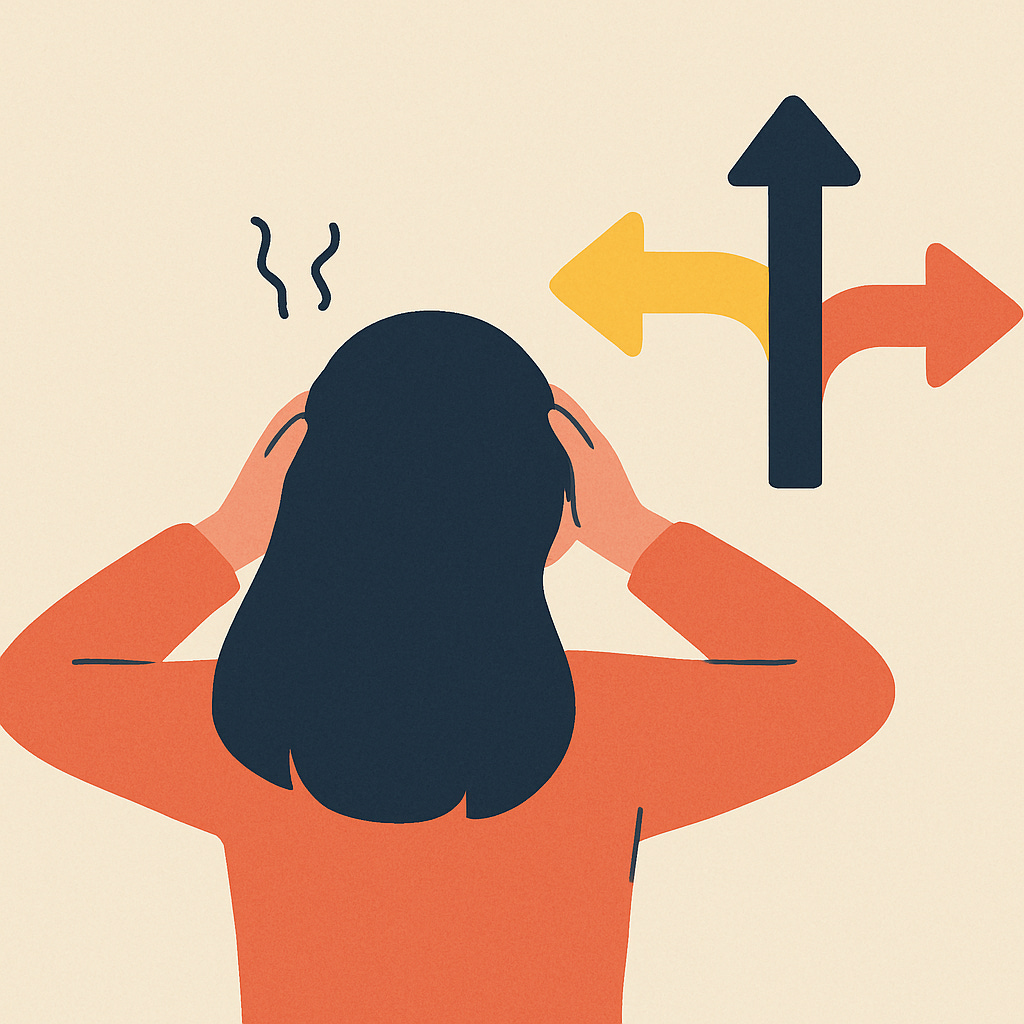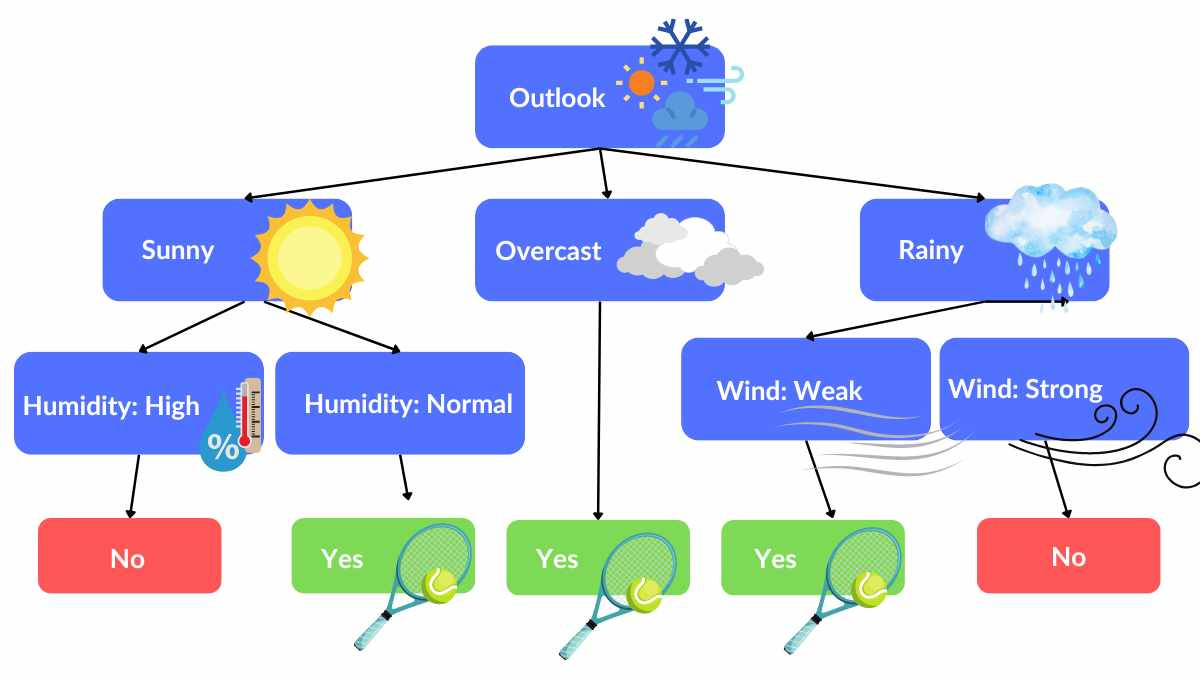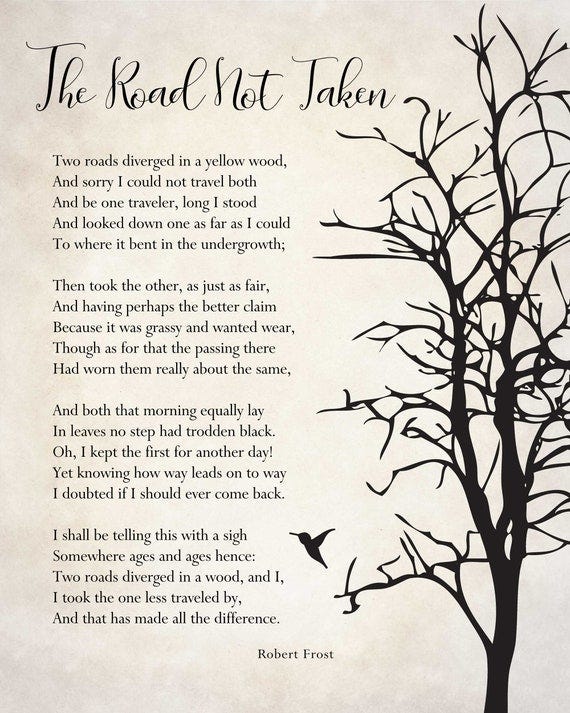Gut, Brain, or Spreadsheet
Q: What is your approach to making decisions?
Kinnari’s Dialogue
Have you ever sat with a decision for too long? Not wanting to choose one path or the other. Paralyzed because neither choice seemed easy. Waiting for clarity. Waiting for things to change on their own. Choosing to not choose - which is of course also a choice. It's a choice to continue living in that limbo state of indecision. Sometimes we stick with the status quo and live in that state of conflict, sulking and feeling trapped in those self-imposed mental prisons.
“There are no solutions, only trade offs” - Thomas Sowell, American economist.
The thing with choices is that each one comes with its own consequences. We can only choose one path. I have to forego the benefits of the path I did not pick. I have to pay the price of the one I did. This is true for the big, heavy decisions - Should I marry this person? Should we have a child? Should I leave this job? Should I end this relationship? And equally true for the small everyday ones - what should I make for dinner? Which summer camp should I book for my daughter? Where should we go on holiday? Every single choice is a trade off. And every single choice has a consequence.
Recently I picked up Oliver Burkeman’s book “Meditations for Mortals” and came across the following -
"Whatever choice you make, so long as you make it in the spirit of facing the consequences, the result will be freedom in the only sense that finite humans ever get to enjoy….Freedom to examine the trade-offs - because there will always be trade-offs - and then to opt for whichever tradeoff you like.”
Is that the right approach? I’ll try it out and see if fully accepting the trade-offs that come with my decision can help me get comfortable with making one.
Mitali’s Dialogue
I first learnt about decision trees in an Operations Science class that I took as an undergrad. It was taught as a management tool to visualize and analyze complex decision-making processes like planning product launches or expanding offices.
“Decision trees help break down complex problems into smaller, more manageable parts. They allow for the exploration of different scenarios and help to identify potential risks and tradeoffs between different options.”
Why do I bring this up? Because in real life when faced with choices we often try to apply this tool to decisions like choosing a college, pursuing a career path or even for everyday tasks like choosing what to eat for lunch. But in order to use this tool we must make some predictions on options that are available at each decision node. In real life many of those scenarios aren't clear. It is hard to imagine future potential outcomes when there are too many variables at play. This can lead to analysis paralysis or decision fatigue and cause us to freeze when it all seems too overwhelming.
“There is a transcendent spontaneity of life, a "creative reality ", which reveals itself as immanent only when the perceiver's mind is in a state of “alert passivity" of "choiceless awareness” - Aldous Huxley
But there is another way that I have also tried. Despite being a strategic thinker and a rational person, I don't recall engaging in this analysis when making some of the “important decisions” in my life. When I look back on those moments, I find that I didn't really take much time to go back and forth considering alternate options or to imagine the various paths I could have opted to go down. Instead I went with a gut instinct circumventing the cognitive overload that can happen otherwise. Maybe in the back recesses of my brain I had been working on the decision trees for many months, but in the moment it felt like spontaneity forced the decision without any fear of choosing “wrong”.
It's how I decided to have a second child even after my first child was diagnosed with disabilities or how I chose to make a radical late career switch from business development to HR or how I started writing about my personal reflections here after quitting a long business career in tech. An impulse to take a certain action and then see how it plays out.
In my current life this gut instinct is often brought to the forefront when I have to advocate for my son in his IEP (individualized education plan) meetings at school. When we discuss the annual services and goals needed for my son who has a disability I often have to remind myself that “It’s ok to not know if these are the right outcomes for him” or “I don't know where he will be developmentally in a year”. I have to trust that there are no wrong choices but that the path will unfold for him as it is meant to. All I can do is recognize where he is today and support him based on what he needs right now. While other high schoolers might be choosing which AP courses to take or which extra-curricular activities to pursue to help them get into college, the path is largely unknown for my child. Predicting his future or imagining “what ifs” doesn't serve any purpose. There are many times that I am at a loss as a parent, but I am learning to trust that his path can only be defined by the present moment.
The poem “The Road Not Taken” by Robert Frost is often interpreted as a poem about making choices and the potential for regret or even a celebration of choosing unconventional routes for a more fulfilling life. Robert Frost actually wrote this poem as a joke to a friend to suggest that “our power to shape events comes not from choices made in the material world but from the mind’s ability to mold the past into a particular story.” [Source: The Poetry Foundation]. The roads were about the same, the decision is based on a vague impulse and the difference in the paths is defined by retroactive narrative that turns a whim into something nobler - a decision. In the end it doesn't matter which path is chosen but the narrative we construct about how our life unfolded. We don't have to operate like there is only one “right” choice, which makes us think we owe it to ourselves to hit the mark correctly with every choice.



